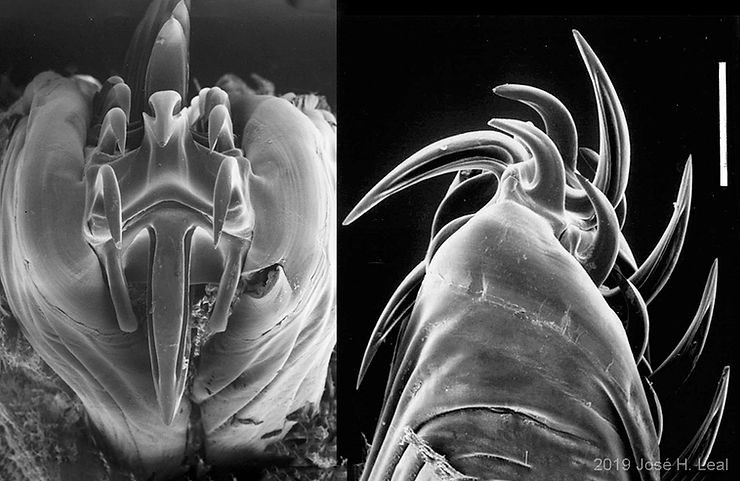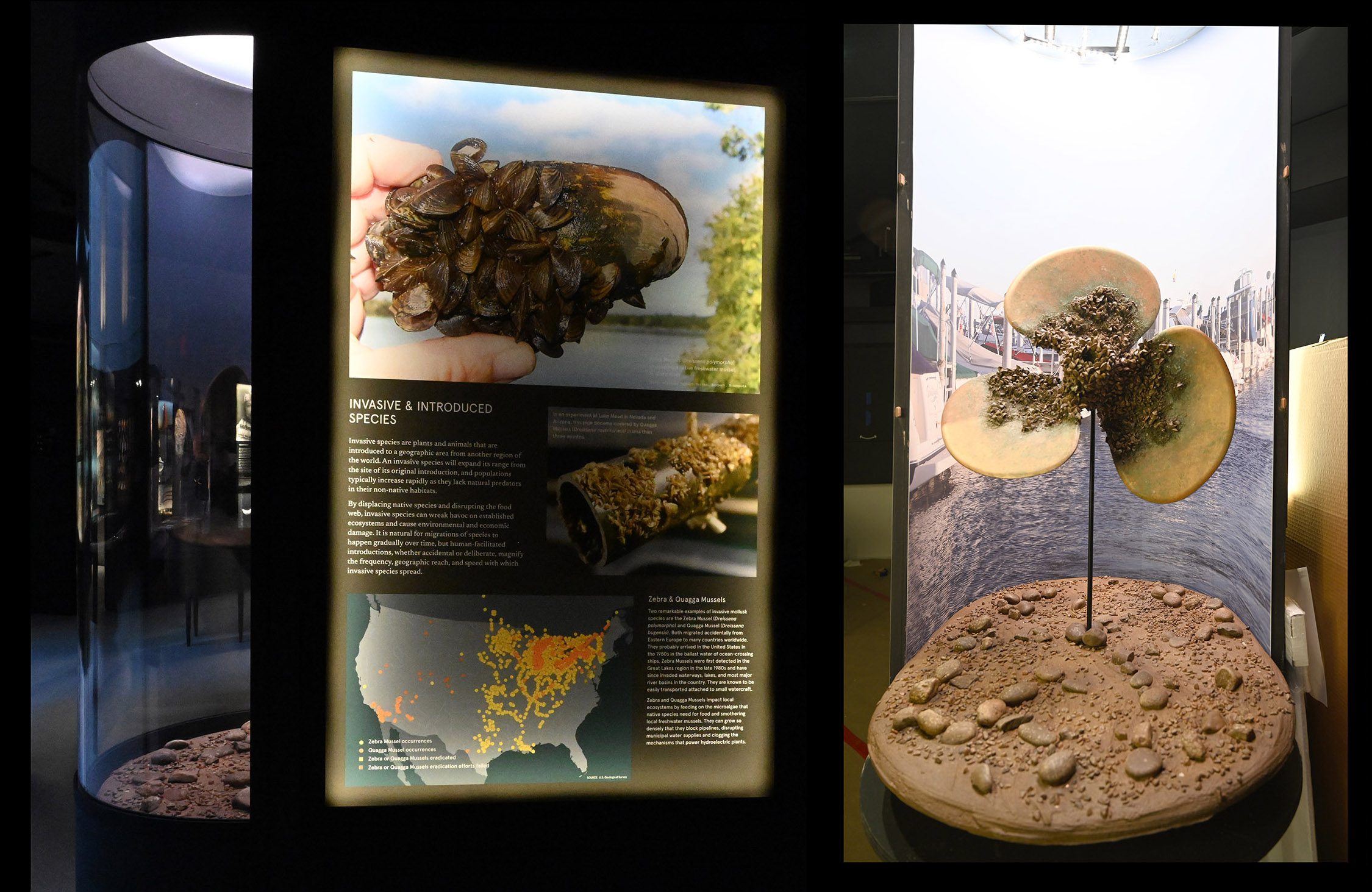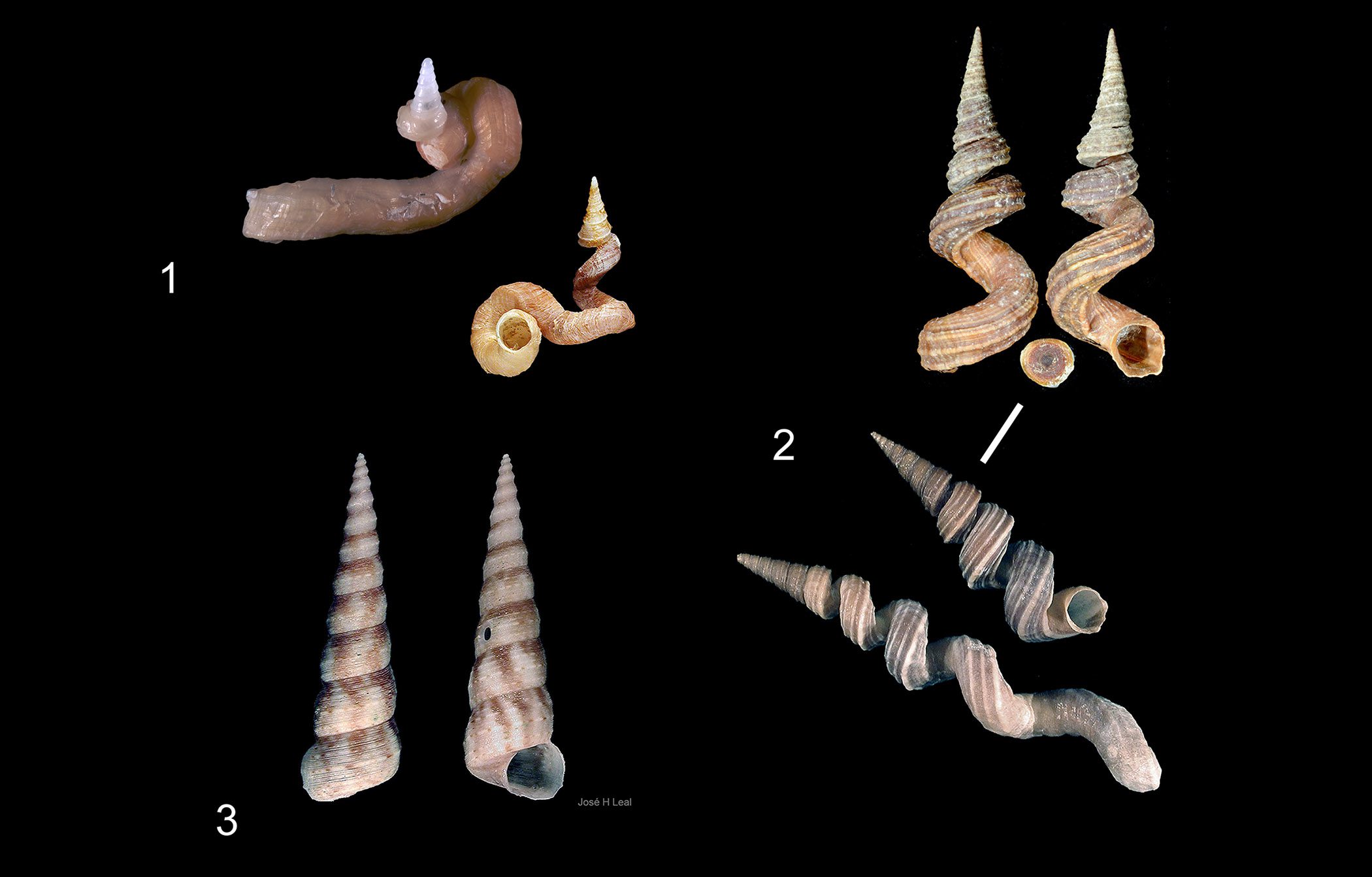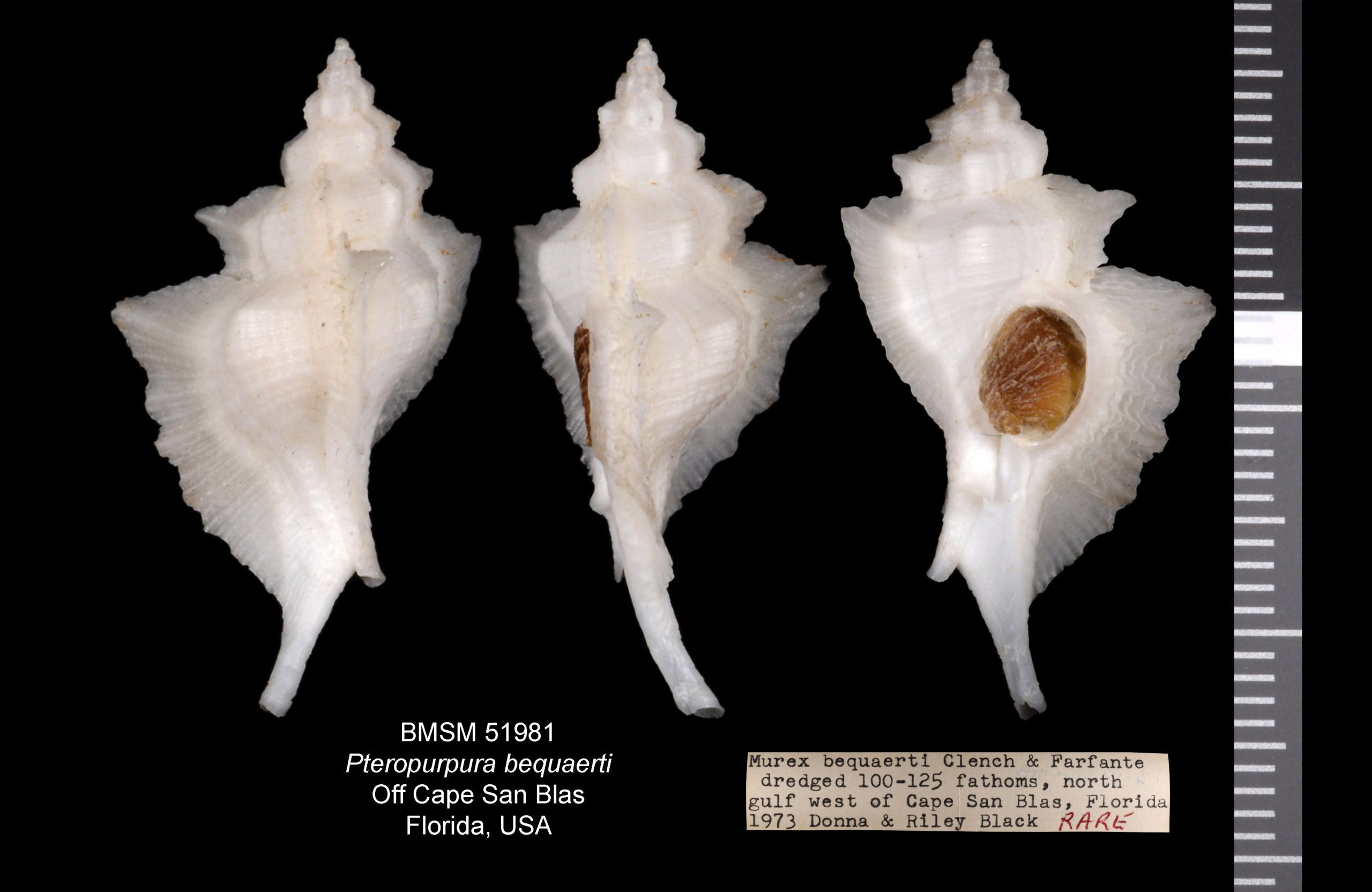Frightened yet? Gastropods and other mollusks use an organ called radula to initiate feeding. Using the radula, which consists of rows of hardened teeth, different kinds of mollusks can scrape food, graze on microalgae, or drill holes into a bivalve shell in preparation for a fresh clam meal! Cone snails use their radular teeth as “hypodermic harpoons” to inject potent cocktails of toxins to paralyze their prey, which may include fish. The photos show the radula of the Magellan Volute, Odontocymbiola magellanica (Gmelin, 1791), a cold-water gastropod from off Argentina and Uruguay, in the South Atlantic. The long, grooved cusps of its radular teeth remind me of the long fingers of Edward Scissorhands, the gentle character played by Johnny Depp in the 1990 movie of the same name. But there is nothing gentle about the food habits of the Magellan Volute. Gregorio Bigatti and collaborators showed, in a paper published in 2010, that they narcotize their gastropod and bivalve prey with potent toxic saliva, then proceed to feed on them using their slashing radular teeth. (I took the images under a Hitachi scanning electron microscope at the National Museum of Natural History, Smithsonian Institution, some years ago.)
 Two views of the radula of Odontocymbiola magellanica. The scale bar equals 0.5 mm, or 0.02 inch.
Two views of the radula of Odontocymbiola magellanica. The scale bar equals 0.5 mm, or 0.02 inch.


